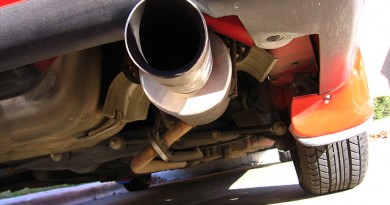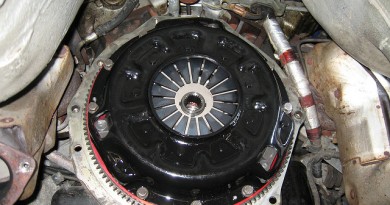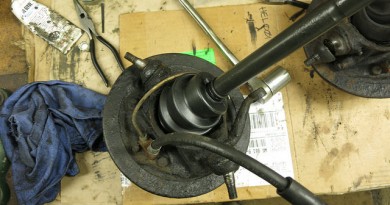How Much Does it Cost To Replace A Timing Belt?
Timing belt replacement cost is something to place on a schedule of mechanical repairs and maintenance; timing belt cost, while nominal, can run into big money if one isn’t careful in regularly replacing the part and maintaining the service. This is one instance, also, where a mechanic’s skills will probably be needed in the part replacement, as it usually requires special assistance and machinery to complete the service.
Timing belt replacement cost can definitely run into money; it also should be a regular part of the auto’s maintenance simply because it is nearly impossible to visually inspect the belt itself. This is an instance where one should find a mechanic before one is needed; it’s also one of the few times the do-it-yourselfer should swallow his pride and take the car to a service station or the dealership, if he wants the full value out of the cost of timing belt replacement.
There are usually two expenses to deal with, timing belt cost (the cost of the part) and timing belt replacement cost (the cost of the service). An average ballpark figure for a timing runs between $250 and $750; this includes the labor and use of special installation mechanisms. Depending on the make and model of the car, several different adjusting tools and setups may be needed which will add to the timing belt replacement cost. The operation (and that’s what it feels like sometimes) can take as few as two hours or as long as six, depending on the make/model of the automobile being serviced. There have been hourly labor quotes for this particular job as low as $40 and as high as $200, again depending on make and model. Timing belt replacement cost, in other words, can run high financially, while the belt itself, as is usually true, is a minor expense.
What Is A Timing Belt?
The timing belt controls the camshafts in the engine that make the entire vehicle run smoothly; they are present in cars whose engines have overhead cams, and they are necessary to keep the cams turning uniformly and smoothly. Tension is key here, hence the need for tensioners that are properly adjusted onto the belts.
In some engines (known as interference engines, possessing a small space between valve and piston), a timing belt failure can cause major damage, sending a piston like an arrow into an open valve. The engine itself may suffer extensive and explosive damage as a result. Other engines (non-interference, possessing no such space) can still be markedly injured, but not as extensively. Nonetheless, the failure of a timing belt equals the failure of an engine, and adds huge sums to the aforementioned cost of timing belt replacement.
How Much Does A Timing Belt Cost?
Timing belt cost is nominal, but, again, it isn’t recommended that one replace the timing belt as a do-it-yourself. However, if one has the expertise and time, as well as the tools and equipment, a great deal of cash can be saved. A timing belt by itself runs between $15 and $30 depending on the make needed for the particular vehicle being serviced. One should figure on a lengthy period of time (up to six hours) for the do-it-yourselfer to complete the service, but there are few if any other expenses in timing belt cost, and it’s obviously a huge savings over timing belt replacement cost.
Timing Belt Tensioner Cost
The timing belt tensioner is the mechanism that keeps the belt in place and keeps its tension adhering to the standards necessary to keep the pumping system running smoothly. A loose belt will slip off the pulleys more easily; an over-tight one will crack and need replacement more quickly.
To obviate these problems, the timing belt tensioner is a “fulcrum point” along the belt’s path that keeps the tension uniform. If the tensioner needs replacing; the part and labor charge figured into the timing belt replacement cost usually runs between $125 and $400, depending on the difficulty involved in the replacement. This is one case where, if one is replacing the tensioner as a do-it-yourself project, the consumer should have ample automotive experience and proper tools ready.
The timing belt tensioner usually runs on average $20 to $50 for the part itself; one should figure one to two hours of labor, either by oneself or the garage mechanic, in the cost of timing belt replacement.
When To Change A Timing Belt
Timing belt cost is minimized if the regular service of the vehicle includes scheduled maintenance at intervals of 60,000 to 80,000 miles; some manufacturers do not see the need to replace belts until the vehicle has hit 100,000 miles. One should consult one’s owner’s manual to be sure; in fact, most car dealerships include in the owner’s manual a general calendar for servicing that should be done on a regular basis in order to prolong vehicle and engine life.
Timing Belt Symptoms
Timing belt failure can be responsible for the majority of cars breaking down, particularly foreign and sports models, unless one is familiar with the belt and how well it functions. Again, it cannot be visually inspected with ease, but regular maintenance is the key to keeping the vehicle running smoothly.
Since the timing belt is in a sense the chain fastened to the car’s combustion engine, its connections should run smoothly; it follows that a damaged, loose or shaking belt would give indications that its performance was impaired.
In general, timing belt symptoms include a car that is explosive when starting, putting out far more exhaust than it does normally, or backfiring regularly. If there is difficulty starting the car, and the problem cannot be localized to electric, gas or starter-oriented, the odds are good that it’s the timing belt that is causing trouble. If strange noises that “ping” or “smack” are coming from the car’s engine, this is a danger sign; as well, if the car’s engine begins to vibrate to such an extent that it shakes the entire car, that’s a dead giveaway.
These are indications that a timing belt must be replaced, and very quickly; an immediate visit to the mechanic is ideal in this instance.
- 858SHARES






